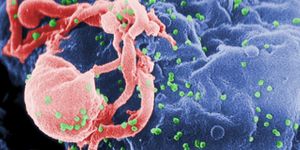We've reached 410 ppm of atmospheric CO2; now what?
Remember back when the number was 350? 350 parts per million (ppm) of carbon dioxide in the atmosphere was the absolute maximum that our planet could withstand without risking a no-return point of climate change. Well, we’ve definitely passed that tipping point: just last month we reached 410 ppm of atmospheric CO2, surpassing any level that humans have ever seen. On April 18, the Keeling Curve, a University of California San Diego, Scripps Institution of Oceanography program, documented the record at Mauna Loa Observatory in Hawaii, much to scientists’ despair. So, what does that number actually mean for our home?
Photo: Keeling Curve
Well, we reached 400 ppm several years ago, and while scientists say there is nothing that makes 410 and 400 vastly different in how our planet responds, “They give us an opportunity to pause and take stock and act as useful yard sticks for comparisons to the geological record," says University of Southampton palaeoclimate researcher Gavin Foster.
The numbers also help to spur public actions. Although we know by now that climate change is no easy fix, NOAA atmospheric scientist Pieter Tans assured Climate Central that "The rate of increase will go down when emissions decrease.” Of course, he says, “Carbon dioxide will still be going up, albeit more slowly. Only when emissions are cut in half will atmospheric carbon dioxide level off initially."
To cut emissions in half requires extreme dedication from all citizens and governments around the world. While the Paris Climate Agreement was a step in the right direction, countries must continue to fulfill their environmental commitments in order to maintain momentum. Following Science Alert, research shows that by 2100 our global energy supply must be generated by less than 25% fossil fuels. While individual and grassroots movements are springing up around the United States, citizens stand by waiting for their governments to support their environmental activism, hoping to lead their communities on the right paths toward a lower ppm number.
Sources: Climate Central, Scientific American, Science Alert









